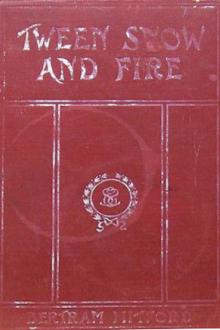The History of the American Expedition Fighting the Bolsheviki
Book Excerpt
INTRODUCTION
The troopships "Somali," "Tydeus," and "Nagoya" rubbed the Bakaritza and Smolny quays sullenly and listed heavily to port. The American doughboys grimly marched down the gangplanks and set their feet on the soil of Russia, September 5th, 1918. The dark waters of the Dvina River were beaten into fury by the opposing north wind and ocean tide. And the lowering clouds of the Arctic sky added their dismal bit to this introduction to the dreadful conflict which these American sons of liberty were to wage with the Bolsheviki during the year's campaign.
In the rainy fall season by their dash and valor they were to expel the Red Guards from the cities and villages of the state of Archangel, pursuing the enemy vigorously up the Dvina, the Vaga, the Onega and the Pinega Rivers, and up the Archangel-Vologda Railway and the Kodish-P
Editor's choice
(view all)Popular books in History, War, Biography
Readers reviews
Review of 'Fighting the Bolsheviki. Campaigning in North Russia 1918-1919':
The book was written by three officers of the United States Army, Captain
Joel R. Moore, Lieutenant Harry H. Mead, Lieutenant Lewis E. Jahns, of the
339th Infantry Regiment, part of a military expedition that several nations
sent in support of White Russians fighting in the Archangel region of North
Russia, near the White Sea, against Bolshevik Communist troops from Moscow.
This was the only time in History when big numbers of regular Soviet troops
engaged regular troops of the United States and of other nations that were
involved in the struggle against Communism: Canada, Great Britain, France,
Italy, Czechoslovakia, Poland, Serbia, and contingents of other armies.
Only two thousand copies of the book were printed in 1920, given to surviving
U. S. soldiers of the North Russia campaign. The son of one of them had one
of the copies, from which he made a digital version, now available in Project
Gutenberg and in Many Books Net. A little known chapter of History, because
the end of the Great War made the allied nations forget the fight in Russia.
-Early 1917: unrest all over Russia, the Imperial Army is very hard pressed
in all fronts by German, Austro-Hungarian, Bulgarian and Ottoman forces.
-March 1917 (February in the Julian Calendar): Tsar Nicholas II Romanoff
abdicates. A Royal Regency governs the Russian Empire for some months.
-Germany transports the Russian revolutionary V. U. Lenin and his staff in a
special train from Switzerland to Russia, for starting a revolution.
-September 1917 (August in the Julian Calendar): the Republic is proclaimed,
General Alexandr Feodorovitch Kerensky becomes President of Russia.
-November 1917 (October in the Julian Calendar): a revolution takes power in
Moscow. Of the many political parties involved, the Bolshevik Communists led
by Vladimir Ulianov Lenin and Lev Davidovitch Trotsky overpower the others.
-3rd March 1918: the Treaty of Brest-Litowsk ends the War between the Central
Powers (Germany, Austria-Hungary, Bulgaria, Ottoman Empire) and the Soviet
Union. The allied nations begin a (then secret) plan to open again the East
War Front, by disembarking an assortment of forces in Russian Arctic ports.
British Prime Minister Lloyd George enthusiastically supports the plan, but
Britain (and France) lack troops for massive intervention in Russia. Germany
has begun a strong attack against France, so British and French soldiers are
needed at the West Front. United States President Woodrow Wilson is not sure
of sending troops to Russia. The Soviets initially seem distant to the War,
but when it becomes clear that they are helping Germany, Wilson reluctantly
accepts sending a limited United States force. Marshall Foch (Supreme Allied
Commander) gives Command of allied forces in Russia to British General Poole.
-Late June 1918: 1 200 British, with a few United States and French soldiers,
depart for Murmansk and Archangel. United States Ambassador David R. Francis
secretly negotiates with the Regional Governments of Murmansk and Archangel.
-1st August 1918: feeling safe with the arrival of allied troops, Murmansk
and Archangel declare themselves against the Soviet Government. Anti-Soviet
Russians, British, French and United States forces fight the Red Guards and
expel them from the two cities and their immediate surrounding area. German
Ambassador in Moscow, Count von Mirbach, threatens Lenin and Trotsky with a
German advance from Finland into Russia and the capture of Saint Petersburg.
-Mid August 1918: the Red Guards counter attack. The scanty allied troops
desperately call for help. A stronger allied force is hastily mustered. The
Soviets can not focus all their efforts on the far North, because Admiral
Kolchak and other Imperial Russian Navy or Imperial Russian Army Generals,
are active in Siberia and other regions for restoring the Throne to the Tsar.
-25th August 1918: British ships depart from Newcastle-upon-Tyne, with troops
of various nationalities chosen for fighting in Murmansk and Archangel.
-4th September 1918: three ships land 5 500 United States soldiers in the
Russian port of Archangel, controlled by the anti-Bolshevik Government of
North Russia. Russians, Poles, French, British, United States Navy and other
troops had arrived before, and are hard pressed by the Bolshevik Red Guards.
-5th September 1918: a United States Infantry Battalion departs at once by
train, to support the few allied troops that are resisting near Obozerskaya,
about 150 Kilometres South of Archangel. They arrive and man the defences.
The anti-Soviet Government of Archangel is led by President Tchaikowsky,
inspired by the now gone Russian Republic of President Kerensky. There are
also Russian Monarchists led by Colonel Tschaplin, loyal to the Tsar. The
Monarchists overpower the Republicans and Tschaplin rules only six days in
Archangel (5th to 11th September 1918), but an intervention by United States
Ambassador Francis prevents serious hostilities among anti-Soviet factions.
-11th September 1918: first combat between United States and Soviet forces.
United States victory, capturing Verst 466 and the bridge at Verst 464.
-16th September 1918: Soviet Infantry counter-attack, supported by Artillery
and bombing aeroplanes. It fails, the surviving Soviets turn and run away.
-28th September 1918: nocturnal march through thick forest of United States
and some British troops, to take Versts 458 and 455. Lacking guides and maps,
they stumble upon a swampy maze, are stopped by a lake, and have to return.
-29th September 1918: Soviet attack towards Verst 461, conquering some ground
but stopped by United States and French forces at the bridge. Heavy losses,
due to the Soviet hordes and to clear incompetence of the British Commander.
-13th October 1918: French-United States attack against Versts 458 and 455,
this time with surprising success, forcing the Soviets to Versts 457 and 450.
-16th October 1918: first rumours of general armistice to end the Great War.
-17th October 1918: United States capture of Verst 445, expelling 600 Soviets.
A single Soviet soldier guards 27 Russian women and children, threatening to
explode a grenade. An interpreter assures him that the civilians will all be
respected, but that he must be taken prisoner. More calm, he surrenders. Red
propaganda always presented the allies as monsters, avid of innocent blood.
With Winter approaching, the allies dug in trenches at some Kilometres from
Emtsa, on the railway from Archangel to Vologda. Red Artillery shoots daily.
-4th November 1918: Soviet attack repelled by French and United States forces.
-11th November 1918: the armistice is agreed, the Great War is ended. But the
armistice does not include the Soviet Union. War still continues in Russia...
The rest of this fascinating history is left to the reader of Many Books Net.
The rating is given as four points instead of five, because of the rather Yankee chauvinistic tone that permeates the book, but otherwise the information is accurate and well explained.
- Upvote (0)
- Downvote (0)

 Free Download
Free Download





















-itok=vcKIB5v1.jpg)